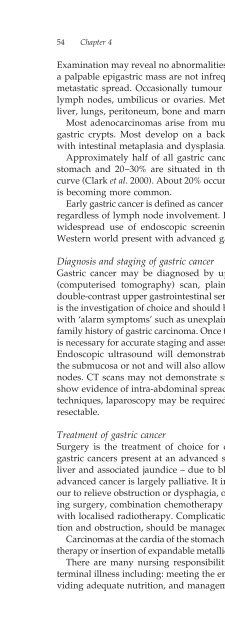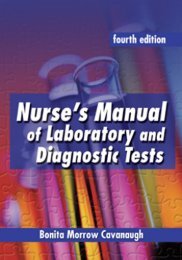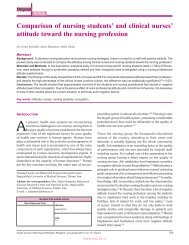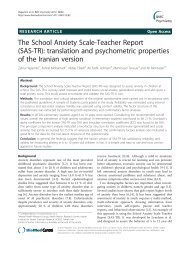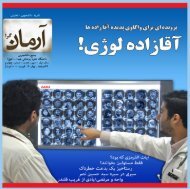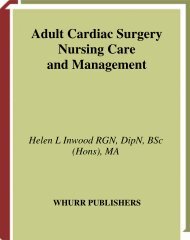Gastrointestinal Nursing.pdf
Gastrointestinal Nursing.pdf
Gastrointestinal Nursing.pdf
You also want an ePaper? Increase the reach of your titles
YUMPU automatically turns print PDFs into web optimized ePapers that Google loves.
54 Chapter 4Examination may reveal no abnormalities, but signs of weight loss, anaemia ora palpable epigastric mass are not infrequent. Jaundice or ascites may signifymetastatic spread. Occasionally tumour spread occurs to the supraclavicularlymph nodes, umbilicus or ovaries. Metastases occur most commonly in theliver, lungs, peritoneum, bone and marrow.Most adenocarcinomas arise from mucus-secreting cells in the base of thegastric crypts. Most develop on a background of chronic atrophic gastritiswith intestinal metaplasia and dysplasia.Approximately half of all gastric cancers occur in the antral region of thestomach and 20–30% are situated in the gastric body, often on the greatercurve (Clark et al. 2000). About 20% occur in the cardia and this type of tumouris becoming more common.Early gastric cancer is defined as cancer confined to the mucosa or submucosa,regardless of lymph node involvement. It is often recognised in Japan, wherewidespread use of endoscopic screening is practised. Most patients in theWestern world present with advanced gastric cancer.Diagnosis and staging of gastric cancerGastric cancer may be diagnosed by upper gastrointestinal endoscopy, CT(computerised tomography) scan, plain stomach or chest X-ray films anddouble-contrast upper gastrointestinal series. Upper gastrointestinal endoscopyis the investigation of choice and should be performed promptly in any patientwith ‘alarm symptoms’ such as unexplained weight loss, rectal bleeding and afamily history of gastric carcinoma. Once the diagnosis is made, further imagingis necessary for accurate staging and assessment of the tumour for resectability.Endoscopic ultrasound will demonstrate whether the lesion has penetratedthe submucosa or not and will also allow for visualisation of infiltrated lymphnodes. CT scans may not demonstrate small involved lymph nodes, but willshow evidence of intra-abdominal spread or liver metastases. Even with thesetechniques, laparoscopy may be required to determine whether the tumour isresectable.Treatment of gastric cancerSurgery is the treatment of choice for curable lesions. Unfortunately manygastric cancers present at an advanced stage; patients may have an enlargedliver and associated jaundice – due to blood-borne metastases. Treatment foradvanced cancer is largely palliative. It involves surgical resection of the tumourto relieve obstruction or dysphagia, or to control chronic bleeding. Followingsurgery, combination chemotherapy may be used alone or in conjunctionwith localised radiotherapy. Complications of gastric cancer, such as perforationand obstruction, should be managed as and when they occur.Carcinomas at the cardia of the stomach may require endoscopic dilation, lasertherapy or insertion of expandable metallic stents to allow adequate swallowing.There are many nursing responsibilities in the care of the patient with aterminal illness including: meeting the emotional needs of the individual, providingadequate nutrition, and management of the patient’s pain.


